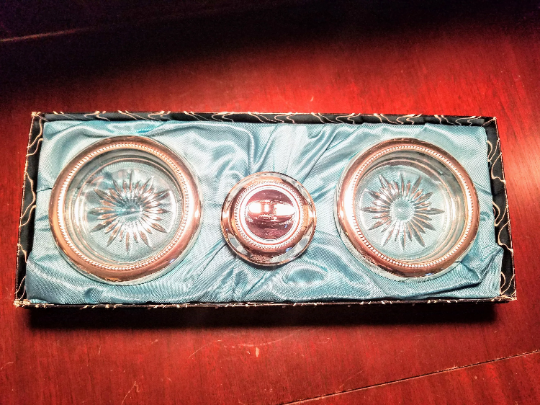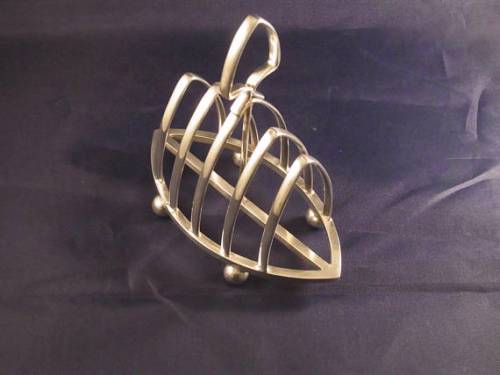Awhile ago, I found this beautiful set of silver ashtrays and lighter in its original box. Boy, they really knew how to package things back then. These are from the 1920s. Whether you smoke or not, you cannot deny the craftsmanship of this set. The glass and silver are beautiful together.

The mark on them denotes “Frank M. Whiting Sterling.” So who is this Frank M. Whiting who does such gorgeous work? When did he start working in silver? I need to know, so let’s jump into this rabbit hole together and find out a little bit about Mr. Frank M. Whiting!

According to a thesis on the Whiting Manufacturing Company by Abigail Barnes Nova, the story actually starts with his father, William Dean Whiting (1815-1891) who was a silversmith. William Dean worked his way up through different apprenticeships and firms until he helped found Whiting Manufacturing Company in 1866 in Attleboro, Mass. After an extensive fire that destroyed the operation, they rebuilt in Attleboro before they moved to New York City in 1875.

This is important information in that it shows the progression of Frank M. Whiting’s early life. He would have moved with his family as the company moved. The company excelled in lines of Japanese-inspired silver in competition with Tiffany. As a side note, Charles Osborne was also a designer for Whiting Manufacturing Company, and he was later associated with Tiffany.

In 1880 we see Frank Mortimer Whiting enter the scene. As the second son of Frank Dean Whiting, he and his dad returned to Attleboro and opened the F.M. Whiting Company. He had worked for his father’s company in both Attleboro and New York City as an assistant. He also worked the sales end of things as a traveling salesman. He wasn’t actually a designer at Whiting Manufacturing Company; which is interesting, he was a businessman.

His dad, William Dean may have actually done most of the designing with other silversmiths doing the work. Unfortunately, poor Frank M. appears to have died early. He died in 1892 about a year after his dad. His sisters ran the business under the F.M. Whiting Company after that until they had to change the name in 1895 to “Frank, M. Whiting and Company” and get a whole new trademark. This was because the Whiting Manufacturing Company didn’t want them to make any money off of the name association.

The Frank M. Whiting Company ran until the 1940s when they were bought up by the Ellmore Silver Company and ceased to exist (Metropolitan Museum of Art, “In Pursuit of Beauty: Americans and the Aesthetic Movement.” p. 485). So that places my set of ashtrays and lighter as manufactured sometime between 1895 to 1940. It happens to be a 1920s design but that’s how you date your items. Frank M. Whiting & Company didn’t come into existence until 1895 and F.M. Whiting was only in business from 1880 until 1894.

So there is the story of Frank Mortimer Whiting and his silver company. I hope you have enjoyed reading! Have a great week!








